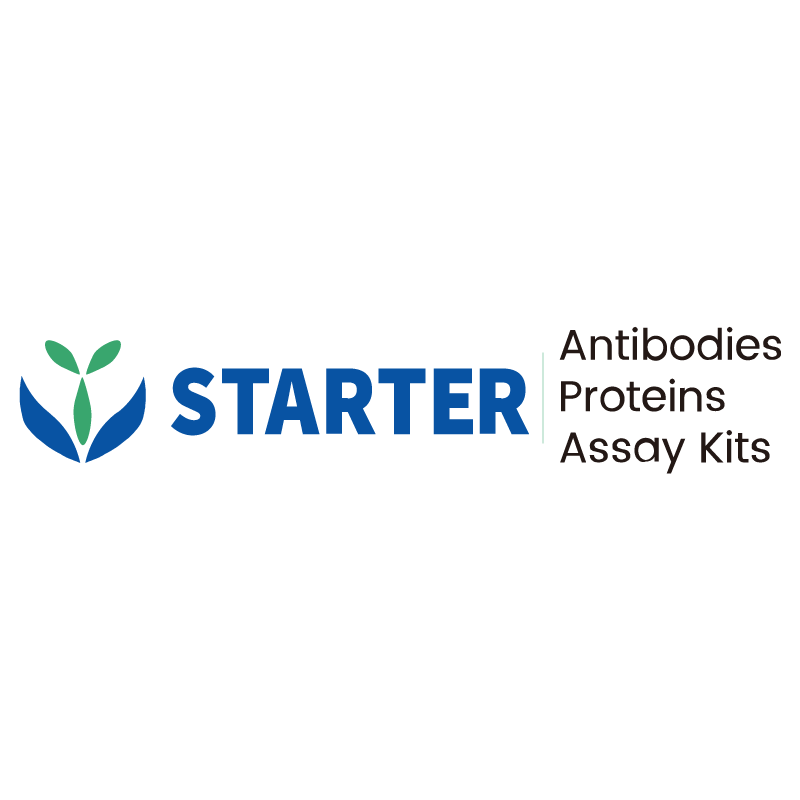WB result of AHR Recombinant Rabbit mAb
Primary antibody: AHR Recombinant Rabbit mAb at 1/1000 dilution
Lane 1: A204 whole cell lysate 20 µg
Lane 2: HepG2 whole cell lysate 20 µg
Lane 3: A431 whole cell lysate 20 µg
Lane 4: MCF7 whole cell lysate 20 µg
Lane 5: PC-3 whole cell lysate 20 µg
Secondary antibody: Goat Anti-rabbit IgG, (H+L), HRP conjugated at 1/10000 dilution
Predicted MW: 96 kDa
Observed MW: 96 kDa
Product Details
Product Details
Product Specification
| Host | Rabbit |
| Antigen | AHR |
| Synonyms | Aryl hydrocarbon receptor; Ah receptor; AhR; Class E basic helix-loop-helix protein 76 (bHLHe76); BHLHE76 |
| Immunogen | Synthetic Peptide |
| Location | Cytoplasm, Nucleus |
| Accession | P35869 |
| Clone Number | S-2370-150 |
| Antibody Type | Recombinant mAb |
| Isotype | IgG |
| Application | WB, ICC |
| Reactivity | Hu, Ms, Rt, Mk |
| Positive Sample | A204, HepG2, A431, MCF7, PC-3, C2C12, mouse testis, rat liver, COS-7 |
| Purification | Protein A |
| Concentration | 0.5 mg/ml |
| Conjugation | Unconjugated |
| Physical Appearance | Liquid |
| Storage Buffer | PBS, 40% Glycerol, 0.05% BSA, 0.03% Proclin 300 |
| Stability & Storage | 12 months from date of receipt / reconstitution, -20 °C as supplied |
Dilution
| application | dilution | species |
| WB | 1:1000 | Hu, Ms, Rt, Mk |
| ICC | 1:500 | Hu |
Background
The aryl hydrocarbon receptor (AHR) is an evolutionarily conserved, ligand-activated transcription factor that resides primarily in the cytoplasm as part of an HSP90-containing multiprotein complex; upon binding planar aromatic ligands—ranging from environmental pollutants such as dioxins and polycyclic aromatic hydrocarbons to endogenous or dietary molecules like tryptophan photoproducts and flavonoids—it translocates to the nucleus, heterodimerizes with its partner ARNT (HIF-1β), and binds xenobiotic response elements (XRE/DRE) to drive transcription of genes involved in xenobiotic metabolism (e.g., CYP1A1), but it also exerts broad non-genomic and non-canonical actions by crosstalking with NF-κB, Wnt, MAPK, and hypoxia signaling pathways, thereby modulating immune cell differentiation, inflammatory cytokine production, antioxidant responses, cell cycle checkpoints, and even osteoclastogenesis, placing AHR at the hub of environmental sensing, metabolic homeostasis, immune tolerance, and pathologies including autoimmunity, cancer, osteoporosis, and premature aging.
Picture
Picture
Western Blot
WB result of AHR Recombinant Rabbit mAb
Primary antibody: AHR Recombinant Rabbit mAb at 1/1000 dilution
Lane 1: C2C12 whole cell lysate 20 µg
Lane 2: mouse testis lysate 20 µg
Secondary antibody: Goat Anti-rabbit IgG, (H+L), HRP conjugated at 1/10000 dilution
Predicted MW: 96 kDa
Observed MW: 96 kDa
WB result of AHR Recombinant Rabbit mAb
Primary antibody: AHR Recombinant Rabbit mAb at 1/1000 dilution
Lane 1: rat liver lysate 20 µg
Secondary antibody: Goat Anti-rabbit IgG, (H+L), HRP conjugated at 1/10000 dilution
Predicted MW: 96 kDa
Observed MW: 96 kDa
WB result of AHR Recombinant Rabbit mAb
Primary antibody: AHR Recombinant Rabbit mAb at 1/1000 dilution
Lane 1: COS-7 whole cell lysate 20 µg
Secondary antibody: Goat Anti-rabbit IgG, (H+L), HRP conjugated at 1/10000 dilution
Predicted MW: 96 kDa
Observed MW: 96 kDa
Immunocytochemistry
ICC shows positive staining in HepG2 cells. Anti-AHR antibody was used at 1/500 dilution (Green) and incubated overnight at 4°C. Goat polyclonal Antibody to Rabbit IgG - H&L (Alexa Fluor® 488) was used as secondary antibody at 1/1000 dilution. The cells were fixed with 100% ice-cold methanol and permeabilized with 0.1% PBS-Triton X-100. Nuclei were counterstained with DAPI (Blue). Counterstain with tubulin (Red).


